December 2025 |
|
 | Tucker Carrington, Queen's University Chemistry Seminar at the University of Utah
with Tucker Carrington, Queen's University Exceptionally accurate ro-vibrational energy levels and tunnelling splittings of water dimer
by Tucker Carrington, Queen's University Abstract: We have used (contracted) basis functions that incorporate coupling between inter-molecular coordinates and coupling between intra-molecular coordinates and an iterative eigensolver to compute many energy levels of water dimer (a 12-D problem). The water monomers are completely flexible. We solve the full problem in a basis of products of intramolecular and inter-molecular functions. Intra-molecular coordinates specify the shape of the monomers and intermolecular coordinates specify the relative orientation of the two monomers and distance between them. We are able, for the first time, to compute many monomer-excited states water dimer. To solve the intra-molecular and inter-molecular problems we use the Lanczos algorithm, exploiting the product structure of the primitive basis. We calculate the potential matrix for the full problem without storing the potential on a full-dimensional grid. This is done by storing an intermediate matrix, called the F matrix and parallelizing the calculation. We use a new super accurate potential energy surface computed by S. Yang and D. Zhang, who fit a two-body interaction term with a large number of high-level ab initio points. Agreement with experimental spectra is extremely good. For (H2O)2 the best experiments probe the intermolecular levels and the root means square error (RMSE) with respect to experimental levels is 0.29 cm−1 ; for (D2O)2 the best experiments probe the intra-molecular levels and the RMSE with respect to 22 of 24 intra-molecular (D2O)2 levels is 0.17 cm−1 . The accuracy of our calculation makes it possible to re-assign several experimental bands. Host: Ryan Steele  More info More info  Add to calendar Add to calendar  Forward to friends Forward to friends |
|
|
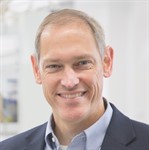 | Shannon Stahl, University of Wisconsin-Madison Organic Chemistry Seminar at the University of Utah
with Shannon Stahl, University of Wisconsin-Madison TBBC 4630 (4th floor Thatcher) Title: TBA
by Shannon Stahl, University of Wisconsin-Madison Abstract: TBA Host: Chem SAC  More info More info  Add to calendar Add to calendar  Forward to friends Forward to friends |
|
|
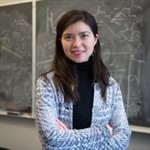 | Ann Wuttig, University of Chicago Analytical Chemistry Seminar at the University of Utah
with Ann Wuttig, University of Chicago In-person seminar
4630 TBBC
4th floor Thatcher Electrocatalytic Synthesis with Interfacial Control
by Ann Wuttig, University of Chicago Abstract: Chemical synthesis driven by electricity offers a scalable, decentralized, and energy-efficient route to furnish value-added products – from fuels to complex molecules. Maximizing reaction efficiency and durability requires immobilized catalytic active sites on electrodes, resulting in dispersed and non-uniform sites. This heterogeneity challenges iterative optimization of reactivity through traditional catalyst modifications, which rely on uniform, singular active sites. This lecture will focus on our research developing synthetic tools and concepts to predictively control interfacial structures at heterogeneous and reusable electrodes at the molecular level. Surface-sensitive techniques and mechanisms will be highlighted throughout the talk. Applications of our interfacial designs in enabling selective chemical syntheses and durable energy conversion systems will be discussed. Bio: Anna Wuttig is a Neubauer Family Assistant Professor in the Chemistry Department at the University of Chicago. She joined the faculty in July 2021. She holds a A.B. in Chemistry from Princeton University and a Ph.D. in Inorganic Chemistry from MIT. She was an NIH Postdoctoral Fellow at UC Berkeley. Her research group develops electricity-driven chemical reactions to synthesize products across the chemical value chain by drawing on physical and synthetic inorganic and organic tools to advance the underlying science gating chemical reactivity at electrified interfaces. Host: Long Luo/Qilei Zhu  More info More info  Add to calendar Add to calendar  Forward to friends Forward to friends |
|
|
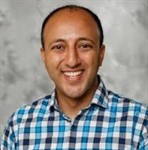 | David Nagib, Ohio State University Organic Seminar at the University of Utah
with David Nagib, Ohio State University TBBC 4630
4th floor Thatcher
In-person seminar Harnessing Radical and Carbene Polarity in Organic Synthesis
by David Nagib, Ohio State University Abstract: Radical and carbene chemistry can afford opposite or orthogonal reactivity to classic two-electron pathways. By developing radical chaperone strategies that merge open (1e-) and closed shell (2e-) processes, we have harnessed this complementary reactivity (and polarity) to impart new types of chemo-, regio-, and stereo- selectivity for remote, double, or reversed C-H and C-O functionalizations of alcohols, amines, and carbonyls. These carbene and radical chaperone strategies are continually being developed to streamline the synthesis of complex, medicinally relevant molecules and heterocycles. This seminar will highlight our newest, most exciting chemistry and the mosaic of champions behind these discoveries. Host: Qilei Zhu  More info More info  Add to calendar Add to calendar  Forward to friends Forward to friends |
|
|
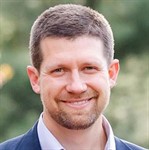 | Robert Baker, Ohio State University Physical Chemistry Seminar at the University of Utah
with Robert Baker, Ohio State University TBBC 4630
4th floor Thatcher
In person seminar Elucidating Charge, Spin, and Solvation Dynamics at Catalytic Interfaces
by Robert Baker, Ohio State University Abstract: At the heart of many energy conversion and information processing technologies is the need to control charge and spin transport in systems that are far from equilibrium. This can never be accomplished without the ability to probe these dynamics on the relevant scales of time and space. High harmonic generation enables the production of extreme ultraviolet (XUV) light with femtosecond to attosecond pulse durations. Like X-ray absorption, XUV spectroscopy is element specific, providing chemical details such as oxidation state, spin state, and coordination environment of individual elements in complex materials. To extend this technique to study electron dynamics at surfaces and interfaces, we have pioneered XUV transient reflection to serve as a surface sensitive analog of XUV transient absorption. This method now enables direct observation of charge and spin transport at surfaces with nanometer surface sensitivity, femtosecond time resolution, and unprecedented chemical state specificity. As an example, this talk will describe ultrafast XUV measurements of yttrium iron garnet (Y3Fe5O12), which reveal how spin polarized electron transport increases water splitting efficiency by more than an order of magnitude compared to widely studied hematite (α-Fe2O3) and how this technique is currently being employed to understand ultrafast coupling of charge, spin, and lattice degrees of freedom to elucidate the mechanism of chiral induced spin selectivity (CISS). In addition to ultrafast XUV spectroscopy, we utilize sum frequency generation vibrational spectroscopy to study interfacial electric fields and ion solvation at electrochemical interfaces. This talk will illustrate how together these experiments enable new understanding of the molecular features of interfaces that control important energy conversion reactions. Bio: Robert Baker received his B.S. degree from Brigham Young University in 2007 and his Ph.D. from the University of California, Berkeley in 2012 under the supervision of Gabor Somorjai. Following a postdoctoral fellowship with Stephen Leone, he joined The Ohio State University in 2014. His awards include the Camille Dreyfus Teacher-Scholar Award, Coblentz Award in Molecular Spectroscopy, Emerging Leader in Atomic Spectroscopy, Young Innovator Award in NanoEnergy, Journal of Physical Chemistry/PHYS Division Lectureship, DOE Early Career Award, and AFOSR Young Investigator Award. Baker was the John von Neumann Distinguished Fulbright Fellow to Hungary in 2023 where he performed research at the Extreme Light Infrastructure Attosecond Light Pulse Source. He is the founding director of the NSF National eXtreme Ultrafast Science (NeXUS) Facility. His research focuses on developing spectroscopic tools to probe charge, spin, and solvent dynamics at catalytic interfaces. In addition to research, he is enthusiastic about teaching and mentoring the next generation of scientific leaders. Host: Luisa Whittaker-Brooks  More info More info  Add to calendar Add to calendar  Forward to friends Forward to friends |
|
January 2026 |
|
 | Andrew McNally, Colorado State University Organic Chemistry Seminar at the University of Utah
with Andrew McNally, Colorado State University In-person seminar
4630 TBBC
4th floor Thatcher Title: TBA
with Andrew McNally, Colorado State University Abstract: TBA Host: Qilei Zhu  More info More info  Add to calendar Add to calendar  Forward to friends Forward to friends |
|
|
 | Guangbin Dong, University of Chicago Organic Chemistry Seminar at the University of Utah
with Guangbin Dong, University of Chicago TBBC 4630
4th floor Thatcher
In-person seminar Title: TBA
by Guangbin Dong, University of Chicago Abstract: TBA Host: Qilei Zhu  More info More info  Add to calendar Add to calendar  Forward to friends Forward to friends |
|
February 2026 |
|
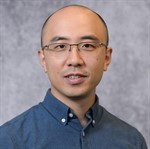 | Jun Ohata, North Carolina State University Organic Chemistry Seminar at the University of Utah
with Jun Ohata, North Carolina State University 4630 TBBC
4th floor Thatcher
In-Person Seminar Title: TBA
by Jun Ohata, North Carolina State University Abstract: TBA Host: Andrew Roberts  More info More info  Add to calendar Add to calendar  Forward to friends Forward to friends |
|
|
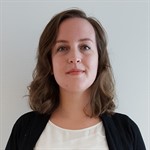 | Monica McCallum, U Penn Organic Chemistry Seminar at the University of Utah
with Monica McCallum, U Penn TBBC 4630
4th floor Thatcher
In-Person Seminar Title: TBA
by Monica McCallum, U Penn Abstract: TBA Host: Andrew Roberts  More info More info  Add to calendar Add to calendar  Forward to friends Forward to friends |
|
March 2026 |
|
 | Natalie Stingelin, Georgia Tech Materials Chemistry Seminar at the University of Utah
with Natalie Stingelin, Georgia Tech TBBC 4630
4th floor Thatcher Title: TBA
by Natalie Stingelin, Georgia Tech Abstract: TBA Host: Connor Bischak  More info More info  Add to calendar Add to calendar  Forward to friends Forward to friends |
|
|
 | Chris Newton, University of Georgia Organic Chemistry Seminar at the University of Utah
with Chris Newton, University of Georgia In person seminar
TBBC 4630
4th floor Thatcher Title: TBA
by Christ Newton, University of Georgia Abstract: TBA Host: Andrew Roberts  More info More info  Add to calendar Add to calendar  Forward to friends Forward to friends |
|
|
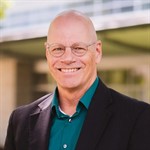 | Kevin Moeller, Washington University in St Louis Organic Chemistry Seminar at the University of Utah
with Kevin Moeller, Washington University in St. Louis TBBC 4630
4th floor Thatcher
In-person seminar Title: TBA
by Kevin Moeller, Washington University in St. Louis Abstract: TBA Host: Qilei Zhu  More info More info  Add to calendar Add to calendar  Forward to friends Forward to friends |
|
|
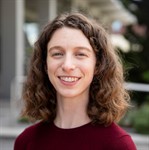 | Megan Jackson, University of North Carolina at Chapel Hill Physical Chemistry Seminar at the University of Utah
with Megan Jackson, University of North Carolina at Chapel Hill TBBC 4630
4th floor Thatcher
In-person seminar Title: TBA
by Megan Jackson, University of North Carolina at Chapel Hill Abstract: TBA Host: MingLee Tang and Long Luo  More info More info  Add to calendar Add to calendar  Forward to friends Forward to friends |
|
|
 | Stang-Burrows-Sessler Lectureship with Hanadi Sleiman, McGill University Stang-Burrows-Sessler Lectureship at the University of Utah
with Hanadi Sleiman, McGill University TBBC 4630
4th floor Thatcher
In-person seminar Title: TBA
by Hanadi Sleiman, McGill University Abstract: TBA Host: Qilei Zhu  More info More info  Add to calendar Add to calendar  Forward to friends Forward to friends |
|
|
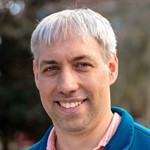 | Ken Hanson, Florida State University Physical Chemistry Seminar at the University of Utah
with Ken Hanson, Florida State University TBBC 4630
4th floor Thatcher
In-Person Seminar Title: TBA
by Ken Hanson, Florida State University Abstract: TBA Host: MingLee Tang  More info More info  Add to calendar Add to calendar  Forward to friends Forward to friends |
|
April 2026 |
|
 | Raul Navarro, Occidental College Organic Chemistry Seminar at the University of Utah
with Raul Navarro, Occidental College TBBC 4630
4th floor Thatcher
In-person seminar Title: TBA
by Raul Navarro, Occidental College Abstract: TBA Host: Matt Sigman  More info More info  Add to calendar Add to calendar  Forward to friends Forward to friends |
|
|
 | Robert Lazenby, Florida State University Analytical Chemistry Seminar at the University of Utah
with Robert Lazenby, Florida State University In-Person Seminar
TBBC 4630
4th floor Thatcher Title: TBA
by Robert Lazenby, Florida State University Abstract: TBA Host: Long Luo  More info More info  Add to calendar Add to calendar  Forward to friends Forward to friends |
|
|
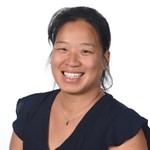 | Jenny Yang, UC Irvine Analytical/Physical Chemistry Seminar at the University of Utah
with Jenny Yang, UC Irvine TBBC 4630
In-Person Seminar Title: TBA
by Jenny Yang, UC Irvine Abstract: TBA Host: Long Luo  More info More info  Add to calendar Add to calendar  Forward to friends Forward to friends |
|
|
 | Nobuhiro Yanai, University of Tokyo Organic and Materials Seminar at the University of Utah
with Nobuhiro Yanai, University of Tokyo TBBC 4630
4th floor Thatcher
In-Person Seminar Title: TBA
by Nobuhiro Yanai Abstract: TBA Host: Ming Lee Tang  More info More info  Add to calendar Add to calendar  Forward to friends Forward to friends |
|
|
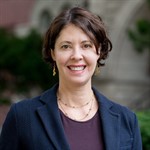 | Christy Landes, University of Illinois Urbana-Champaign The Ted Eyring Lecture at the University of Utah
with Christy Landes, University of Illinois Urbana-Champaign TBBC 4630
4th floor Thatcher
In-Person Seminar Title: TBA
by Christy Landes Abstract: TBA Host: Connor Bischak  More info More info  Add to calendar Add to calendar  Forward to friends Forward to friends |
|
|
 | The Giddings Lecture with Pat Unwin, University of Warwick The Giddings Lectures at the University of Utah
with Pat Unwin, University of Warwick TBBC 4630
4th floor Thatcher
In-Person Seminar Title: TBA
by Pat Unwin, University of Warwick Host: Long Luo
 More info More info  Add to calendar Add to calendar  Forward to friends Forward to friends |
|
|
 | The Giddings Lecture at the University of Utah with Pat Unwin, University of Warwick The Giddings Lecture at the University of Utah
with Pat Unwin, University of Warwick TBBC 4630
4th floor Thatcher
In-Person Seminar Title: TBA
by Pat Unwin, University of Warwick Abstract: TBA Host: Long Luo  More info More info  Add to calendar Add to calendar  Forward to friends Forward to friends |
|